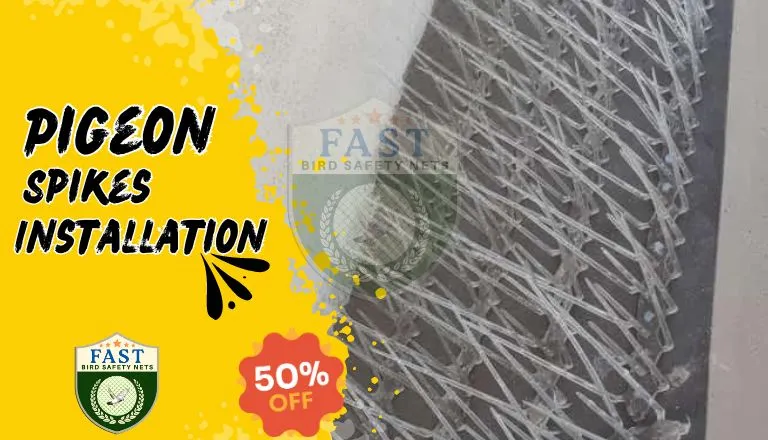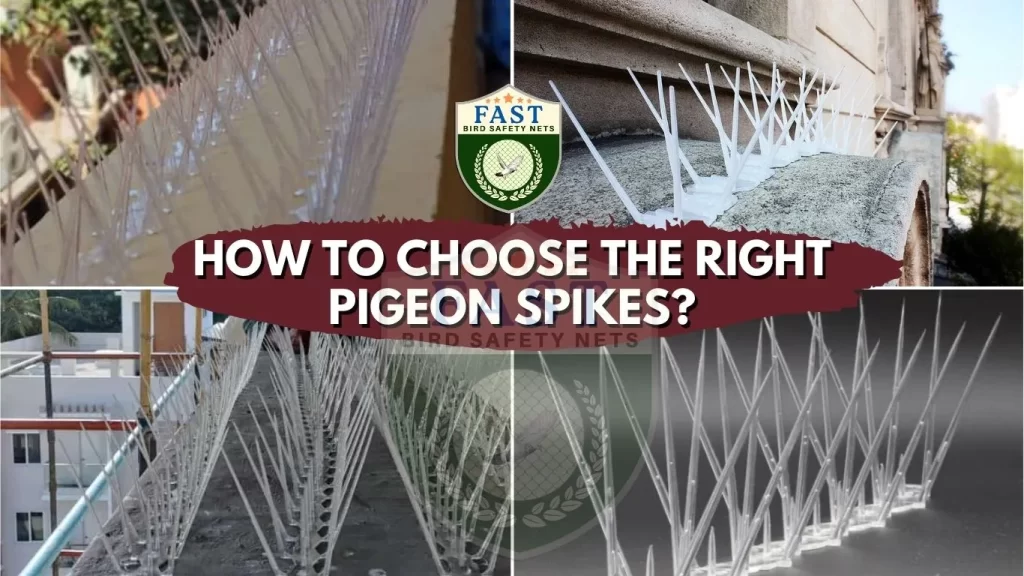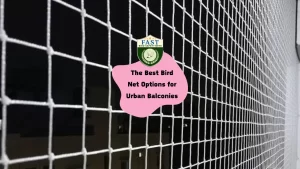I. Introduction
Pigeon spikes serve as essential tools in deterring pigeons from properties, mitigating potential damage and health hazards. Pigeons are notorious for causing various problems, including structural damage, health risks due to droppings, and nuisance behavior. Consequently, there is a pressing need for effective solutions to address these issues. This blog aims to provide readers with comprehensive guidance on selecting the most suitable pigeon spike option for their property, ensuring optimal effectiveness and long-term protection.

II. Understanding Pigeon Spikes
Pigeon spikes, also known as bird spikes or anti-roosting spikes, are devices designed to prevent pigeons and other birds from perching or roosting on surfaces. These spikes typically consist of rows of pointed protrusions made from materials such as plastic, stainless steel, or polycarbonate. The primary mechanism behind pigeon spikes is to create an uncomfortable surface that discourages birds from landing or nesting. Unlike harmful methods such as poisons or traps, pigeon spikes are humane and non-lethal, providing a safe and effective means of bird control.
III. Factors to Consider When Choosing Pigeon Spikes
When selecting pigeon spikes for a property, several crucial factors must be taken into account to ensure optimal performance and suitability:
Property Specific Needs: Each property may have unique requirements in terms of size, layout, and potential roosting areas. Assessing these specific needs is essential to determine the appropriate type and quantity of pigeon spikes required.
Pigeon Population and Behavior: Understanding the size and behavior of the local pigeon population is crucial. Identify common roosting and nesting areas to strategically place pigeon spikes for maximum effectiveness.
Aesthetic Appeal: While the primary goal is bird deterrence, the aesthetic appeal of pigeon spikes should also be considered, especially for residential or commercial properties. Choose spikes that blend seamlessly with the property’s architecture and surroundings.
Installation Requirements: Consider the installation process and any logistical challenges associated with mounting pigeon spikes. Some surfaces may require specialized tools or techniques for proper installation.
IV. Comparing Different Pigeon Spike Options
There are several types of pigeon spikes available in the market, each offering unique advantages and disadvantages. Here’s a comparison of the most common options:
Plastic Spikes: Plastic pigeon spikes are cost-effective and lightweight, making them easy to install. However, they may not be as durable as other materials and may require more frequent replacement in harsh weather conditions.
V. Choosing the Right Pigeon Spike Option for Your Property
To choose the right pigeon spike option for a specific property, follow these steps:
- Conduct a thorough assessment of the property, identifying common roosting and nesting areas.
- Determine the appropriate type and quantity of pigeon spikes needed based on property size and bird behavior.
- Select pigeon spikes that blend seamlessly with the property’s aesthetics while ensuring durability and effectiveness.
- Follow proper installation guidelines to ensure the spikes are securely mounted and positioned for maximum bird deterrence.
- Regularly inspect and maintain the pigeon spikes to ensure continued effectiveness and longevity.VI. Conclusion
In conclusion, pigeon spikes are invaluable tools for protecting properties from the nuisance and damage caused by pigeons. By understanding the various factors involved in selecting the right pigeon spike option, property owners can effectively mitigate bird-related issues and maintain a clean and safe environment. Invest in high-quality pigeon spikes today to enjoy long-term protection and peace of mind.






